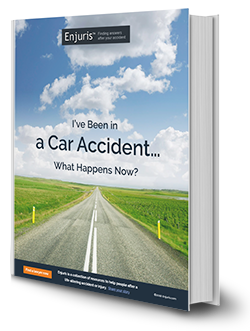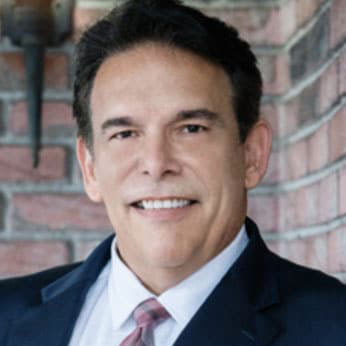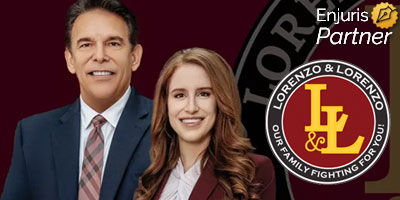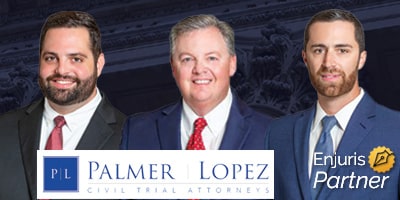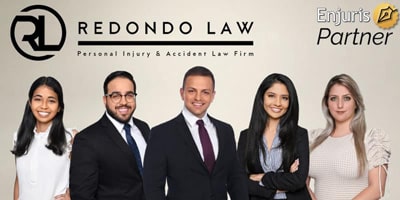Tampa Personal Injury Attorneys
Here’s what to know before you call a personal injury lawyer in Tampa, FL
With a population of over 3 million (and growing), the Tampa–St. Petersburg–Clearwater metro area is home to many Florida families. The area's white-sand beaches, warm Gulf waters and tourist attractions also make it a popular destination spot for travelers. Unfortunately, while beautiful, this region of the Sunshine State is also prone to high rates of car accidents, bicycle accidents, slip and falls, medical malpractice, wrongful death and other types of injury.
Tampa is known as the economic center of the Sunshine State. Attractions include world-class amusement parks, historic mansions, museums, shopping, food, nightlife and Bayshore Boulevard, which is the world’s longest sidewalk. This is only part of the city’s charm.
Whether you're just visiting the Tampa Bay area or you live and work in Hillsborough or Pinellas County, if you're injured by another person's negligence and wish to learn about your legal options, consider contacting one of the Tampa personal injury attorneys listed below.
Some car accidents are minor and straightforward affairs that can be quickly resolved by each party and their insurance company. However, many cases involve complicating factors such as serious property damage, catastrophic injuries or an uninsured/unlicensed driver.
When there's a speed bump in getting compensation you feel you deserve following a crash, it's in your best interests to talk to an attorney. Most reputable firms offer a free consultation, so it costs you nothing but your time to learn about your rights.
Tampa negligence standards and personal injury lawsuits
Florida's personal injury (civil) legal system allows a plaintiff (the injured person) to be made whole if they were injured as a result of negligence. A lawsuit can’t fix broken bones or bring back a loved one who was lost in an accident, but it does help restore the plaintiff to the financial condition they would be in if the accident hadn’t happened.
Negligence is the failure to use the appropriate and reasonable level of care. This standard applies to a variety of personal injury cases.
When a car accident happens, for example, a driver could be negligent for:
- Failing to stop at a red light or stop sign
- Not yielding the right of way
- Texting or otherwise distracted while driving
- Driving under the influence of alcohol or drugs
- Speeding or driving recklessly
There are numerous other behaviors that would constitute negligence. Simply put, negligence is any action or inaction that was reasonably foreseeable to cause someone to be harmed.
Florida’s pure comparative negligence standard
Florida is a pure comparative negligence state, which means the amount you can recover in damages in an accident or serious injury in Tampa is reduced by your percentage of fault.
Here’s how it works:
Let’s say you were just about to back out of your parking space in a busy shopping mall parking lot. You did the correct thing by looking over your shoulder to see if cars were coming before you took your foot off the brake.
But...just as you began to move your car in reverse, 2 things happened:
- Another car came around a sharp corner, traveling much too fast for a parking lot, and
- Your phone buzzed and you took your attention off driving for a moment to read the incoming text.
The car coming around the corner hit the back of your vehicle. It was clearly the other driver’s fault, but if you hadn’t lowered your eyes to look at your phone, you might have seen them coming and hit your brakes, which could have prevented the collision.
The court might find that the other driver is 80% at fault for the crash and you were 20% at fault. So in this scenario, if your damages were $100,000, the court would reduce the amount of your recovery by 20% to $80,000.
Statute of limitations to file a personal injury lawsuit
You typically have 4 years from the date of the accident to file a lawsuit for an injury in Florida. This is called the “statute of limitations.” If you don’t file your lawsuit within that time limit, the court will likely refuse to hear your case.
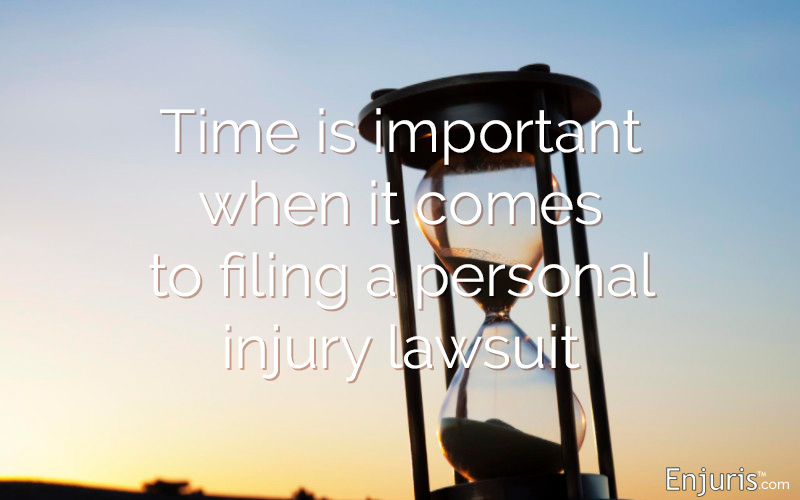
Types of personal injury cases in Tampa, FL
Premises liability lawsuits
Although car accidents are the most common type of personal injury lawsuit, many also arise from premises liability.
This is when a person is injured as a result of a hazardous property condition.
Florida premises liability lawsuits can arise from:
- Slip and falls
- Dog bites and animal attacks
- Swimming pool accident (drowning)
- Toxic fumes or chemical exposure
- Elevator or escalator accident
- Amusement park accident
- Injury or assault related to inadequate security or lighting
- Fire safety or code violations
- Water leaks that result in injury or mold exposure
- Unmarked wet floors
- Missing or broken railings
- Defective conditions, like broken sidewalks or steps
- Equipment malfunction
- Exposed wires or broken lights
- Snow or ice
- Potholes
- Ceiling collapse
- Drainage ditches
- Supermarket negligence
If you were injured because of a property hazard, ask yourself these questions:
- Was the property owner aware of the unsafe condition? Or, was the owner aware within a reasonable amount of time necessary to correct or warn of the hazard?
- Did the property owner warn visitors of the danger? For example, if you know that there’s a branch dangling from a tree in your yard and it’s threatening to fall, you might not be able to take it down immediately but you can warn your neighbors or passersby of the danger so they can avoid the area.
- Did the property owner try to correct the condition? The owner has a duty to make a reasonable attempt to correct a dangerous condition on their property.
Medical malpractice
Another significant area of personal injury law relates to medical malpractice, which is when a patient is injured because of a doctor, hospital, or other medical provider’s negligent act or omission.
The basis for medical malpractice is a negligent violation of the standard of care. The medical profession has certain standards that are recognized and accepted as reasonable, according to healthcare professionals under similar circumstances.
A physician or medical provider is required to administer care according to the standards that would be reasonable according to their training, specialty, and community. In short:
Did the physician act as an equally trained doctor would have in a similar circumstance?
If negligence is established, the patient then needs to prove that the negligence caused injury and that the injury left them with significant damages.
Motor vehicle accidents
While Tampa has a robust system of public transportation that includes more than 200 buses, a streetcar line, and an autonomous electric shuttle, most residents still use cars as a primary form of transportation.
There are several ways to travel through Tampa by car or bus.
| Busiest roadways in Tampa, FL | |
|---|---|
| I-275 | Through center and downtown Tampa |
| I-4 | From east across south Tampa to St. Petersburg |
| FL 589 (Veteran’s Expressway) | North/south highway along West Tampa, passes by Tampa International Airport |
| FL 618 (Leroy Semon Cross Expressway) | Across south Tampa and through the University of Tampa and downtown Tampa |
| I-75 | North/south expressway in east Tampa, connects with I-4 and I-275 |
| East-West primary roads | |
| Fowler Avenue (state road 582) | Northeast Tampa around the University of South Florida, connects with I-275 |
| Gandy Boulevard (U.S. 92) | South Tampa and St. Petersburg |
| Kennedy Boulevard (state road 60) | Runs along South Tampa to St. Petersburg, but farther north than Gandy Blvd.; connects with I-75 and Leroy Semon Cross Expressway |
| Hillsborough Avenue (state road 580) | Central Tampa, connecting with Veterans’ Expressway, I-275, and I-4 |
| North/south primary roads | |
| Florida/Nebraska Avenue (U.S. 41) | East Tampa, connecting with Leroy Semon Cross Expressway and I-4 |
| Dale Mabry Highway (U.S. 92) | West Tampa, also connecting with Leroy Semon Cross Expressway and I-4 |
Wherever there are cars, there are car accidents—and Tampa is no exception. That’s why it’s important to know the laws for car accidents and how to find the right car accident lawyer if you’re injured.
Most dangerous intersections in Tampa
These intersections in Hillsborough County were ranked based on the number of crashes reported in 2017 and 2018:
| Rank | Intersection | Number of crashes (May 2017 through August 2018) |
|---|---|---|
| 1 | Sheldon Road & Waters Ave. West, Town ‘n’ Country | 107 |
| 2 | Anderson Road & Waters Ave. West, Town ‘n’ Country | 103 |
| 3 | Waters Ave. West & Hanley Road, Town ‘n’ Country | 98 |
| 4 | Hillsborough Ave. West & Sheldon Road, Town ‘n’ Country | 96 |
| 5 | 301 HW South & Gibsonton Drive, Riverview | 95 |
| 6 | Waters Ave. & Himes Ave. North, Tampa | 89 |
| 7 | 301 HW South & Big Bend Road, Riverview | 86 |
| 8 | Bruce B. Downs Blvd. & Fletcher Ave. East, Tampa | 84 |
| 9 | Bloomingdale Ave. & Bell Shoals Road, Brandon | 82 |
| 10 | Bloomingdale Ave. & Providence Road, Brandon | 81 |
Source: WFLA News, Tampa
Tampa car accident statistics
The Florida Highway Safety and Motor Vehicles reported these car crash statistics for Hillsborough County in 2020:
Tampa car accident laws
If you’re involved in a crash, you might want to know your options for how to recover costs since even a minor collision can be expensive.
First, know this:
Your car accident lawyer—NOT your insurance company—is the best person to advise you on your rights and liabilities after a collision.
Also, you should understand that if you’re injured in a Tampa car accident, you will likely file a claim based on Florida’s no-fault laws. That means you turn first to your own insurance company to cover the costs for your medical expenses.
Florida drivers are required to have Personal Injury Protection (PIP) insurance, which covers medical treatment and lost wages. PIP can also cover expenses like childcare or other things that are affected by your injury.
If your injuries are severe, permanent, or debilitating—or if the cost is higher than the amount covered by your PIP policy—then you can file a lawsuit to recover the remaining damages.
A lawsuit can help you recover damages including:
- Medical treatment (doctor and hospital visits, surgeries, prescription medication, X-rays and other diagnostics, assistive devices, etc.)
- Rehabilitative therapies (physical, speech, occupational)
- Assistance with daily life activities (housekeeping, childcare, etc.)
- Lost wages
- Pain and suffering
- Mental anguish, including post-traumatic stress disorder
- Loss of consortium
- Wrongful death, if you lost a family member in the accident
Common causes of car accidents
Although there are conditions that make certain roads or intersections more dangerous than others, most car accidents are preventable.
These are the 10 most common causes of car crashes in Tampa:
- Distracted driving. Drivers are increasingly dependent on cell phones for maps, podcasts, music, traffic reports, and other functions. However, mobile phones are not the only cause of distracted driving accidents. Distractions can also include eating, passenger behavior, personal grooming, or any other behavior that takes your mind, eyes or hands off driving. It’s crucial that you’re always paying attention to driving when you’re behind the wheel — and that it’s the only thing you’re doing.
- Drunk driving. In Florida (and all other states), it is against the law to drive if your blood alcohol content (BAC) is 0.08% or higher. Being under the influence of alcohol, drugs, or some medications can severely affect your driving and raises your risk of causing an accident. Even if you’re below the legal threshold for intoxication, it can be unsafe to drive with any amount of alcohol or drugs in your body. The best strategy is that if you’ve been drinking, find another ride like Uber, Lyft, a taxi, or a friend.
- Aggressive driving. “Road rage” is when a driver gets so angry at another person that they bully or physically harm them. Road rage can lead to injuries, even if they are not the direct result of a car accident or collision. Aggressive driving also includes general speeding, swerving, and impatience that isn’t directed at a specific person.
- Speeding. Sometimes speeding is aggressive, and sometimes it is just carelessness. Speeding doesn’t get you to your destination any faster if you crash or get a ticket. And when you speed, you have less time to react to a traffic situation in front of you and less time to stop if necessary.
- Reckless driving. Similar to aggressive driving, reckless driving is any kind of action behind the wheel that’s unsafe. It might be speeding, weaving, dodging other cars, failure to stop at lights or stop signs, or any other number of reckless driving practices that break road rules or are unsafe.
- Inexperienced drivers. Lack of experience could cause even the most careful driver to misjudge the speed of an oncoming car, poorly execute a turn, or make another mistake that results in an accident. Some young drivers are more likely to take risks. Statistically, young male drivers are most likely to make risky driving decisions.
- Tailgating. Tailgating isn’t just a fun thing to do at football games at USF or Raymond James Stadium; it’s also when a driver follows too closely behind the driver in front of them. Some tailgating is aggressive, but other times it happens because someone isn’t paying attention or simply doesn’t see the practice as dangerous. When traveling 55 mph, you should leave 16 car lengths (which is about 243 feet) between your vehicle and the car in front of you. Tailgating is dangerous because when you’re too close to another vehicle, you don’t have enough time to stop if you need to do so quickly. No car can stop on a dime, even if you react quickly. And, even if you stop very fast, there’s no guarantee that the driver behind you will be able to. As a result, tailgating can result in chain-reaction accidents.
- Weather conditions. When the weather is extreme and visibility is poor, it’s best to stay off the roads when you can. But when that’s not practical or realistic, exercise caution and drive slowly. Tampa summers can be wet and cloudy, and winters can be windy. Even though the city doesn’t experience snow or ice, there are other weather hazards that contribute to traffic accidents like heavy rain, hail, strong winds and fog.
- Failure to obey traffic laws. Traffic laws are more than just stopping at red lights. Following the speed limit, staying in your lane, passing bicyclists safely, and yielding to pedestrians are just a few of the many necessary aspects of driving responsibly.
- Failure to stop at a red light or stop sign. Failing to obey stop signs and traffic lights is among the traffic laws Tampa drivers break most often. Even if you think you’re driving through a “quiet” intersection, you must stop completely at stop signs and lights.
What to do after a Tampa car accident (7 steps)
1. Stop.
Florida law requires you to stop at the scene of any collision, no matter how minor. Failure to pull over and provide your contact and insurance information at the scene can result in criminal hit-and-run charges. As soon as it is safe to do so, you should pull your car off the road and out of traffic.
2. Call 911.
It’s always a good idea to call the police when a collision occurs. A police report serves as valuable evidence that can be helpful to your insurance claim or lawsuit. You could also call the Tampa non-emergency dispatch at (813) 231-6130 if you would like a police report but neither you nor anyone else requires medical attention.
Even if you know or think you’re at fault, a police report can still help you. How? A plaintiff could try to claim later that they were more injured than they actually were or that their car sustained more damage, but the police report will set forth the facts of the accident at the scene.
It’s important to cooperate with police officers. You’re not required to make a statement about how the accident happened (and it’s probably best if you don’t), but you can and should provide factual information like your name, address, vehicle registration, and those types of answers when asked.
3. Seek medical attention.
Even if you don’t feel hurt, visit a doctor or hospital anyway as soon as possible following a collision. Some car crash injuries like whiplash and head injuries could have symptoms that don’t appear until days or weeks after the accident. If you don’t get immediate medical care, the other party or an insurance company may try to make the argument that a later symptom isn’t related to the accident.
4. Gather witness information.
Immediately after a crash, you don’t need to worry about recording witness statements. But it is important to be able to reach those people later for their perspective of what happened. A well-meaning bystander might wait to make sure help has arrived or see if everyone is okay and then leave the scene, figuring there’s no reason to stick around. But if anyone at the scene observed the accident — or the period leading up to it — they might have valuable information that can help with your case. Write down each person’s name, phone number, email address, and residence address if possible.
You might also check to see if any surveillance cameras captured the crash on video. Many businesses and residences are equipped with cameras. If the accident happened somewhere that’s close to a business or home, you might be able to recover that footage. But be quick since most businesses will delete camera footage within a short time if they don’t think there’s a reason to save it. If you think there might be worthwhile information captured on video, notify the business or homeowner right away so the footage can be saved.
5. Take photos and videos.
Yes, a police report is important, but you’ve probably heard the phrase “a photo is worth a thousand words.” If you’re not injured and are able to do so safely, take photos and video of the accident scene. Be sure to capture the weather, any traffic signs or signals, the vehicles involved, property damage, road markings, and anything else that might tell a story about how the accident happened and its aftermath.
6. Notify your insurance company.
Notify your insurance company. You can make a report following a crash, and that doesn’t obligate you to file a claim if you later decide to pay out-of-pocket. But if you don’t make a report immediately, you could lose the option to file a claim in the future if you decide that you want to. Many insurance companies have strict time limits on when you need to report the accident, whether or not you intend to file a claim. You only need to give them the basic information about the accident in order for it to be reported.
7. Contact a Tampa car accident lawyer.
A common mistake drivers make is thinking that their insurance company is there to help them. Insurers make a profit when the amounts the company pays out as damage settlements are less than what it earns in premium payments. Therefore, the insurance adjuster’s job is to make you a settlement offer that’s the lowest amount possible that you’ll accept in order to close your claim. The agent on the phone might seem kind and sympathetic, but know that your best interests are not their top priority.
There are 2 main reasons to contact a personal injury lawyer::
- The settlement being offered by the insurance company is insufficient to cover your damage costs.
- You have ongoing medical treatments and future expenses associated with the accident.
Your lawyer is motivated to get you the highest possible settlement or verdict for your accident injuries. Your attorney will review every piece of evidence and consult with medical, financial, actuarial, and other experts in order to minimize your liability and maximize your compensation for an accident.
What does an injury lawyer do?
A personal injury lawyer helps individuals who have sustained injuries in accidents to recover financial compensation. These funds are often needed to pay for medical treatment, make up for lost wages and provide compensation for injuries suffered. Sometimes a case that seems simple at first may become more complicated. In these cases, consider hiring an experienced personal injury lawyer. Read more
Need a lawyer?
